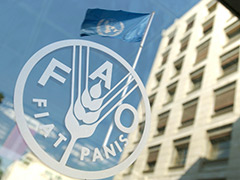How to Reduce Your Food Waste (Without Moving to a Co-Op)
Sep 25

Now, there is a growing number of people who live on co-ops to limit waste, and still others that compost their waste, instead of adding it to our landfills. But, quite frankly, these just aren’t viable options for everyone. So, what can the average consumer do to reduce food waste?
Well, the FAO has also released Toolkit:Reducing the Food Wastage Footprint with ideas to do just that. Here are few to help get you started.
First, when you shop for groceries, use a list and stick to it. Try planning your meals for the week, and identify exactly what you’ll need. When you’re at the store, avoid the temptation to purchase what you don’t need, even if the BOGOs seem amazing. Also, you don’t need to buy the most beautiful tomatoes or apples – consider getting a few “ugly” fruits and vegetables that might otherwise go to waste.
What about the fruits and vegetables that are starting to go bad in the fridge? Instead of throwing them away at the first sign of a bruise, try turning them into smoothies, or make soups.
Eating leftovers is a great food-waste saver. But,what about those leftovers you just couldn’t possibly imagine eating again? If you’re not keen on eating the same thing for dinner and then lunch, and then dinner again, why not repurpose some of the ingredients for another meal? There are some great cookbooks out there that are designed with this in mind (e.g. Sandra Lee’s Semi-Homemade). You can also freeze some foods for later use.
Sources:
http://www.fao.org
http://www.fao.org/docrep/018/i3347e/i3347e.pdf
http://www.fao.org/docrep/018/i3342e/i3342e.pdf




